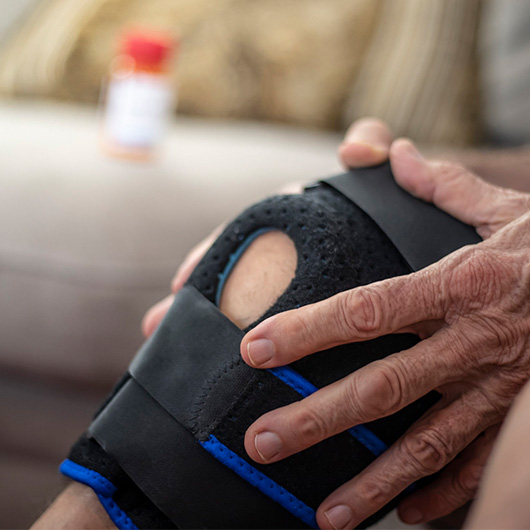10 Ways People with Parkinson’s Can Stay Healthy at Home

August 30, 2021
In this time of uncertainty when people are encouraged to stay at home and maintain social distance, we are all challenged with how to keep active. For people with Parkinson’s Disease where exercise is medicine, this time of COVID-19 can be a true detriment to the maintenance of their abilities.
It is essential that people living with Parkinson’s integrate exercise of their body, brain, voice, speech and swallowing muscles to maintain all these areas of functioning and slow the progression of this disease.
Parkinson’s Disease rehabilitation specialists at Hackensack Meridian JFK Johnson Rehabilitation Institute have outlined the following 10 tips to stay healthy and active at home:
- Keep a routine. Create a set time and place to exercise, using reminders on your calendar, phone or watch to help you stay on track.
- Keep your brain working. Engage in conversations, do word puzzles or other brain games, use apps on your smart phone/tablet to challenge your memory or grab a good book and try some reading.
- Exercise intensity and effort matter. Moderate intensity exercise has been shown to improve the efficiency of the body’s use of dopamine in people with Parkinson’s Disease. Recommendations include exercising at least three times a week. Monitoring your heart rate is a good way to make sure you are exercising at a safe level and in an appropriate target heart rate zone. To calculate your general heart rate zone it is recommended to work at 60 – 80% of a number that is (220 – your age), so a goal heart rate for a 70-year-old individual may be between 90 – 120:(220 – 70) x 60%= 90
(220 – 70) x 80%= 120Another approach is to use an app, such as Heart Rate zones, to assist you. This can help you maintain a safe exercise regimen.
- Exercise your speech and voice muscles every day. Use a strong, healthy voice to make sure that your conversation partner can hear you and remember to practice the exercises provided to you by your speech therapist. Additionally, you may attend a weekly online voice and speech group through your speech therapist. If you don’t have a speech therapist on your team yet, find one that practices online via telehealth and try a speech therapy program specific for people with Parkinson’s disease like LSVT LOUD or SPEAK OUT!.
- Eat healthy. Maintain a healthy diet and drink plenty of water—and make sure that you are focused on the task at hand. To do this, eliminate distractions in your eating environment by turning the television or radio off while you are eating. If you are involved in a conversation at the table, wait to talk until you have completely swallowed.
- Sing by yourself or with those in your family. Sing your favorite songs using a strong and healthy voice to keep your voice and speech muscles moving. Try following the lyrics on a YouTube video or write your own song! Singing also releases happy chemicals in your brain. Perhaps you can even join a choir which practices online.
- Try an online exercise class. Initially, be cautious and start slowly with new exercise programs so you do not strain yourself. There are many free exercise classes online such as the Parkinson Wellness Recovery YouTube channel. Consider looking for classes or videos that are Parkinson’s specific or generic total body exercise classes. Also, look for seated exercise modifications, if you have balance problems.
- Take active breaks. Short bouts of physical activity can add up during the day. Avoid extended periods of sitting or reclining. Excessive sedentary time can make our bodies rigid and decrease mobility. After 30 minutes of sitting or reclining, try standing up and walking a short distance.
- Do something you enjoy. Movement can be added to any activity whether it be gardening, bird watching, completing a puzzle, crocheting, organizing your stamp collection, dancing or even getting your closet ready for Spring. When you move any part of your body to complete a task, make that action intentional—and chose something you like doing!
- Take care of your mental well-being. During this stressful time it is important to take time for oneself. Consider trying meditation or deep breathing to help with relaxation.
Next Steps & Resources:
- Meet our sources: Alyson Chananie, MS, CCC-SLP, Lauren Karpinski, BS, and Jennifer D. Lazaro, PT, DPT, NCS
- To make an appointment with a rehabilitation specialist near you, call 800-822-8905 or visit our website.
The material provided through HealthU is intended to be used as general information only and should not replace the advice of your physician. Always consult your physician for individual care.





